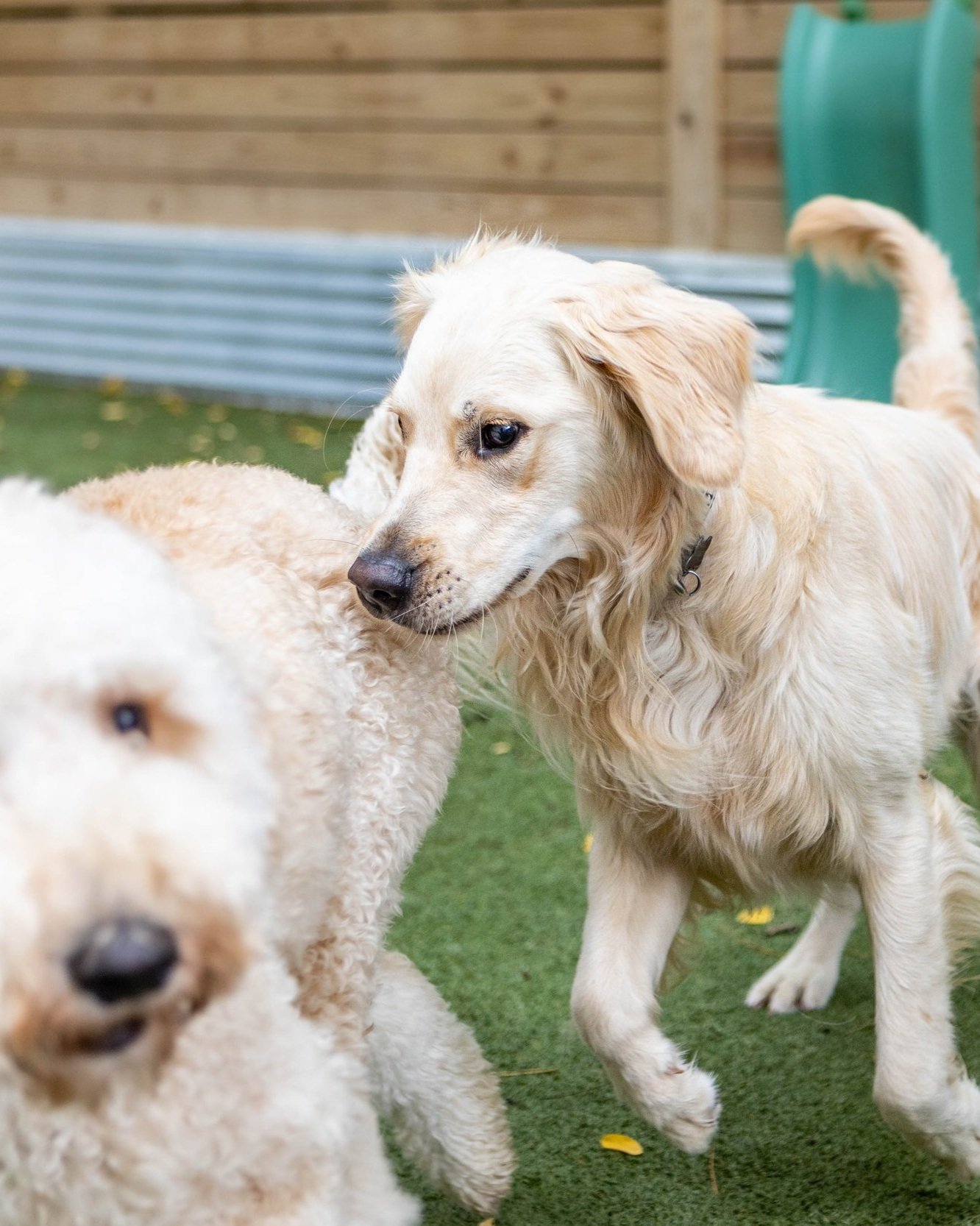Why Dogs Hump in Daycare: Understanding and Managing Humping in Spayed and Neutered Dogs
Despite the widespread belief that dogs hump solely as a sexual act, it is actually a very normal social behavior. Especially with spayed or neutered dogs, humping, also known as mounting, can indicate a variety of emotions or instincts. Some of these are excitement, overstimulation, stress, or assertion of dominance. This behavior often surfaces in environments like daycare facilities, and it can leave many dog owners puzzled since they may not witness the same behavior at home or during playdates with other dogs. To address this issue, we need to understand the root causes behind it and the most effective ways to manage it.
Why Does My Spayed / Neutered Dog Hump?
When your dog enters daycare, it is plunged into a stimulating environment with a multitude of scents, sights, and interactions. While some dogs handle this excitement well, others may respond by engaging in behaviors like humping.
One common reason dogs hump is excitement. Daycare is a playground full of interesting smells, new friends, and activities. This surge of enthusiasm can lead to mounting behavior, even if the dog never displays this behavior in a less stimulating environment.
Overstimulation is another key trigger. Dogs that are not used to such a high level of activity and interaction or who can’t self-regulate or take breaks from play can become overwhelmed, expressing their overstimulation through mounting.
Stress can also be a contributing factor. Although daycare can be fun, it can also be stressful for some dogs. Whether it's separation anxiety from their owners, anxiety around other dogs, or discomfort with the new environment, dogs may resort to humping as a stress response.
Dominance can also play a role, but this is the case less often than most people think. In a daycare setting, your dog is suddenly amongst a whole new pack, and humping can be a way to establish a hierarchy. It's important to note that this is less about power or control and more about finding their place within the group dynamics.
Managing and Redirecting Mounting Behavior
Understanding the root causes behind your dog's mounting behavior is the first step to managing it effectively. Humping itself is not generally a big issue, but it can become a compulsive behavior for some dogs or lead to a fight if they pick the wrong target!
If your dog is humping due to stress or overstimulation, managing the environment is crucial. While daycare centers provide an important service, it's essential that they also offer areas where dogs can take a break and decompress. Make sure that your daycare offers scheduled breaks for the pack (like naptime), and also offers opportunities for dogs that need some extra time away from the excitement, like enrichment add-ons. Regular rest periods away from the hubbub may reduce your dog's stress and, subsequently, the mounting behavior. Dogs who are stressed in a larger pack may benefit from smaller groups of dogs or structured daycare.
Equally important is the ability to catch your dog in the act of mounting and offer redirection. For example, if you notice your dog starting to mount, you can redirect and ask for a "touch" cue. This involves extending your hand and teaching your dog to respond by touching their nose to your hand. Whenever your dog successfully redirects their attention from mounting to the "touch" cue, or whichever cue you choose to ask for, make sure that you reward them with lots of praise and treats! Never scold your dog for humping, as this can increase stress and perpetuate the behavior.
Other redirection strategies include offering a favorite toy or ball to distract them. By consistently providing a constructive outlet for their energy, you're teaching your dog that there are better ways to express their emotions or handle their environment.
Remember, patience is key. Changing a dog's behavior takes time, consistency, and understanding. If you're finding the mounting behavior challenging to manage, consider seeking advice from a professional dog trainer or animal behaviorist. They can offer personalized strategies based on your dog's unique needs and temperament. In the end, our furry friends aren't trying to cause trouble - they're simply communicating in the best way they know how. Understanding and addressing their needs can lead to a happier, more balanced dog, and a safer, more enjoyable daycare experience.
Photos provided by GT Harper Photography


